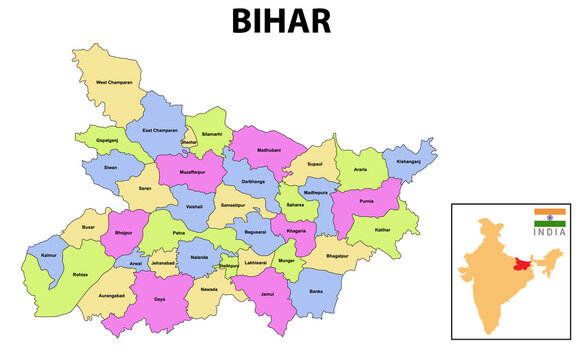
Welcome to the captivating world of Bihar, one of India’s oldest and historically significant states. Since independence, Bihar has seen remarkable leaders who have shaped its destiny.
On this PostSwirl blogging site, we will take you on a journey of Chief Ministers of Bihar, sharing their stories, challenges, and achievements in transforming the state’s politics, society, and economy.
Dr. Sri Krishna Sinha (1946-1961) First CM of Bihar :

Dr. Shrikrishna Sinha, the first Chief Minister of Bihar after independence. People fondly called him “Bihar Kesari,” the Lion of Bihar. His contributions were crucial in building the state’s foundation, as he focused on land reforms, agriculture, and social welfare. During his tenure as Chief Minister, he established several schools and hospitals, improving the lives of millions of people. And his efforts brought about a significant change and laid the foundation for the development and progress of Bihar.
Binodanand Jha (1961-1963) Chief Minister of Bihar:
After Dr. Shrikrishna Sinha, Binodanand Jha became the Chief Minister of Bihar. He had a clear goal – to promote industrial development in the state. He put much effort into building better infrastructure like roads and bridges during his tenure. These reforms created new possibilities for growth and provided more employment opportunities for the people of Bihar. Under the leadership of Binodanand Jha, there was a positive change and progress in the development of the state.
K. B. Sahay (1963-1967):
KB During Sahay’s chief ministership, Bihar made significant progress in education and healthcare. His government paid great attention to helping the weaker sections of society and worked hard to raise the overall standard of living of the people. Thus, Bihar witnessed many positive changes and improvements, making it a better place for all.
Mahamaya Prasad Sinha (1967-1968)
During Mahamaya Prasad Sinha’s tenure as chief minister, he focused on making government work better and more efficient. During his leadership, he aimed to reform governance and how things were run in the state. Also, he paid particular attention to the promotion of agriculture and the development of rural areas. His efforts brought about a positive change and helped Bihar progress.
B. P. Mandal (1968-1968):
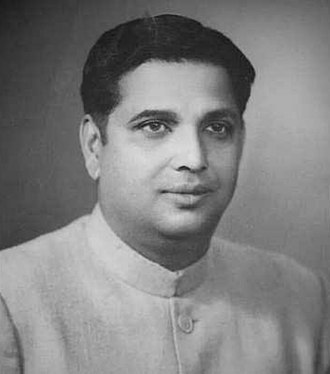
Bindheshwari Prasad Mandal (B P Mandal) as Chief Minister, a significant event took place during the short span of the Mandal. He implemented the famous “Mandal Commission,” which aimed to help those who were backward and marginalized. In addressing the challenges faced by these communities in Bihar, B.P. Mandal’s efforts were significant.
Bhola Paswan Shastri (1968-1968):
Bhola Paswan Shastri was a pioneer – the first Chief Minister in Bihar to come from a Scheduled Caste! Even though his time in office was short, he made a significant impact. Bhola Paswan Shastri cared about education and social welfare. They worked hard to help those people who were marginalized in society and wanted to uplift them. Their efforts were commendable and left a positive mark on Bihar’s progress toward a more inclusive and equal community.
Harihar Singh (1968-1969):
Harihar Singh had some exciting plans in mind during his chief ministership! They worked hard to strengthen the infrastructure of the state, which meant improving things like roads, bridges, and other vital facilities. He also focused on developing rural areas, ensuring that remote areas were taken care of and progressed. Harihar Singh’s efforts brought positive change and development in Bihar, benefiting urban and rural communities.
Daroga Prasad Rai (1969-1971): Daroga Prasad Rai’s tenure as Chief Minister was exciting! He focused on improving agriculture, an essential part of our state’s economy. His efforts led to better growth and development in the agriculture sector. He was also concerned about people’s health, so he worked on improving health facilities. His initiative aimed to ensure everyone gets better medical services and healthy life. During the tenure of Daroga Prasad Rai, there was progress and prosperity in the people of Bihar.
Satish Prasad Singh (1972-1973): Satish Prasad Singh’s tenure as Chief Minister was full of exciting schemes! He focused on promoting industrial growth, which meant creating more industry jobs and opportunities. Additionally, he cared deeply for the youth of Bihar, and worked on improving education and helping them develop new skills. His initiative aims to empower the youth and prepare them for a bright future. The administration of Satish Prasad Singh brought positive changes and progress in the economy of Bihar and the lives of its people.
Abdul Ghafoor (1973-1975): Abdul Ghafoor’s time as Chief Minister was to improve our rural areas! He continued with important projects and initiatives to promote rural development, improving things like roads, schools, and basic amenities in villages. During his leadership, he cared about education and health care. They also worked to ensure that people in remote areas had access to good schools and medical facilities—his efforts aimed to uplift the lives of rural Bihar people and improve their overall well-being. Abdul Ghafoor’s tenure brought positive changes and progress in our state.
Jagannath Mishra (1975-1977; 1980-1983; 1989-1990) 14Th Chief Mnister of Bihar:
Jagannath Mishra was a Chief Minister who served three different terms, which means he had much experience leading our state! He had some grand plans for Bihar. His leadership focused on improving education, meaning he worked to make schools better and more accessible. They also cared about health care and ensured that people got good medical facilities. In addition, Jagannath Mishra was a strong supporter of women’s empowerment. He confirmed that women get more opportunities and rights in our society. So he aimed to bring positive changes and progress in several essential sectors in Bihar.
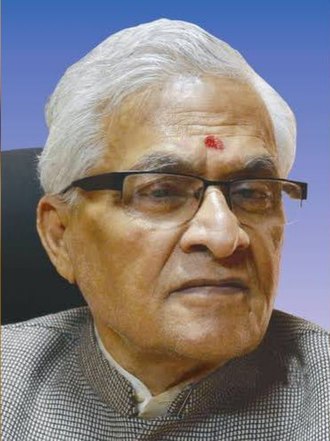
Karpoori Thakur (1977-1979): Karpoori Thakur was a true hero fighting for fairness and justice in Bihar! He strongly supported social justice and focused on helping those who were backward and marginalized in our society. Karpoori Thakur worked hard to uplift the lives of people from these communities, ensuring that they get equal opportunities and a better future. His efforts were instrumental in creating a more inclusive and equal society in Bihar.
Ram Sundar Das (1979-1980; 1990-1997): .
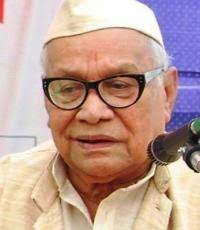
Ram Sundar Das was such a Chief Minister who held the chair of Chief Minister not once but twice in Bihar! He had some exciting plans for the kingdom. His administration was about improving our infrastructure, such as roads, bridges, and other vital amenities. Additionally, they focused on the agriculture sector, which is essential to our economy and the well-being of our people. Ram Sundar Das worked hard to bring positive change and progress in Bihar in these crucial areas. They aim their efforts at making our state even stronger and more prosperous.
Lalu Prasad Yadav (1990-1997) 20th CM of Bihar:
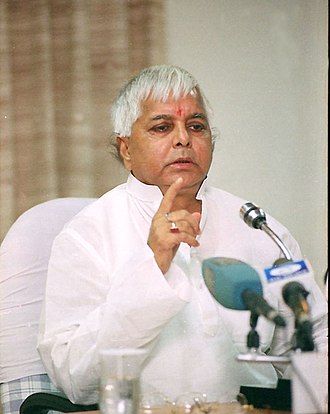
Significant changes occurred in Bihar during the Chief Minister ship of Lalu Prasad Yadav! He made significant strides in social welfare, helping those in need and ensuring everyone had access to vital services. He also focused on rural development, improving people’s lives in villages and remote areas. Lalu Prasad Yadav cared a lot for those people who were marginalized in society and worked hard to give them better opportunities and living conditions. He aimed to make Bihar a more inclusive and supportive place for all.
Rabri Devi (1997-2005) First Female Chief Minister of Bihar
Rabri Devi, Wife of Lalu Prasad Yadav, also got a chance to become the Chief Minister of Bihar, not once, but twice! During his time in office, he focused on ensuring those in need received help and support through social welfare programs. He also cared for rural areas’ development, ensuring villages and remote places had better facilities and opportunities. Rabri Devi’s administration brought positive changes and progress in Bihar, improving the lives of many people in the state.
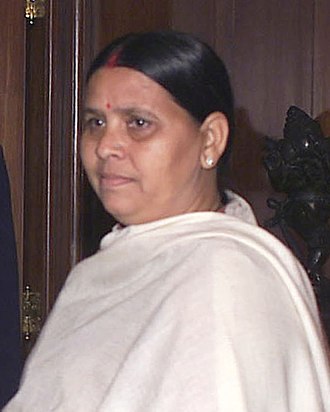
Jitan Ram Manjhi (2014-2015)
In 2014, Jitan Ram Manjhi made history by becoming the Chief Minister of Bihar, taking over from Nitish Kumar, who had resigned from the post. Observers saw this move as a strategic decision to maintain social and political harmony in the state. During his tenure as Chief Minister, Jitan Ram Manjhi, continued the development agenda and welfare schemes initiated by the previous government. He also took various measures to address the challenges socially and economically backward communities face. Through his leadership, Jitan Ram Manjhi has given voice to marginalized communities’ concerns and contributed significantly to the development of the state. Jitan Ram Manjhi’s legacy inspires and influences Bihar’s political landscape.
Nitish Kumar (2005-2010, 2010-2014,2015-Present):
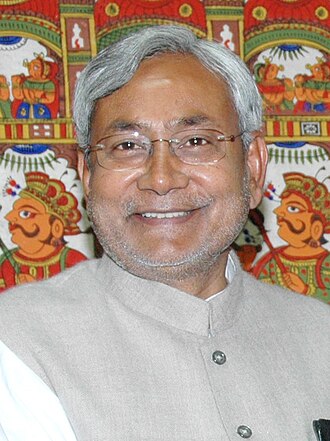
Nitish Kumar has been an outstanding leader for Bihar! He has always focused on good governance, which means ensuring that the government runs smoothly and efficiently. His leadership has been about bringing development and progress to our state, making it a better place for all. Nitish Kumar has worked hard to improve essential things like roads, schools, hospitals, and law and order so that people can get better life and opportunities. And he believes in inclusive development, meaning Bihar’s progress should benefit everyone.
Conclusion:
Since independence, the Chief Ministers of Bihar have played a particular role in shaping the state’s growth and development. From Dr. Sri Krishna Sinha’s pioneering efforts to the current leadership of Nitish Kumar, each leader has left a lasting impact on Bihar’s trajectory. With a focus on inclusive growth, social welfare, and economic development, Bihar continues its journey toward a prosperous and brighter future. As we look back on their contributions, we must also look ahead and continue to work together for the holistic development of the state and its people.




